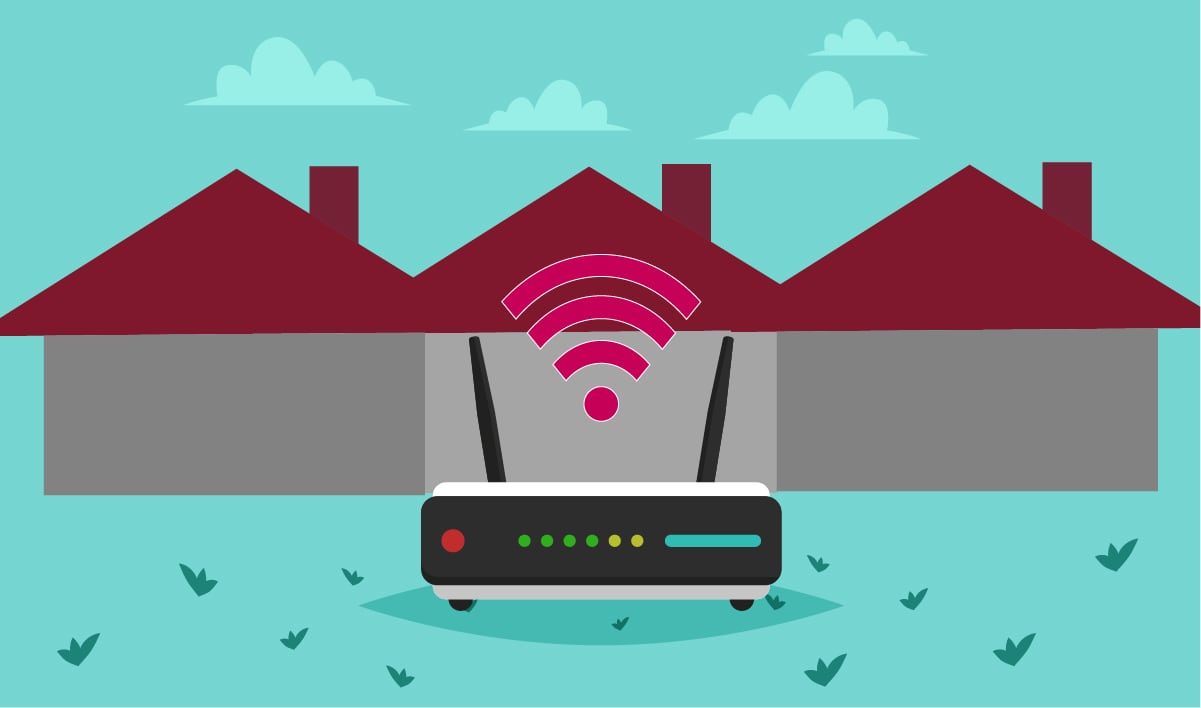Now more then ever we are relying on the best WI-FI performance.
For many of us, Wi-Fi availability and Wi-Fi performance are a consideration when choosing where to live and visit including cafes. bars and restaurants. – even public transport is supporting our need for Wi-Fi connectivity on our smart devices.
You may not be able to change the performance of guest Wi-Fi connections available to you, however you can make changes to your own environments to take full advantage of your Wi-Fi network performance.
Here we provide 10 tips to ensure you get the maximum benefit from your WiFi
Location, Location, Location
By default routers are often located exactly where BT have installed the phone line, tucked in a corner or under the stairs cupboard.
As most Wi-Fi antennas transmit through 360 degrees, this means you are losing Wi-Fi signal to the outside world instead of directing it into your home / office. Where only the router is used to transmit Wi-Fi, you should look to locate your router in the centre of your building for maximum coverage. Other considerations include the construction of walls and water, as water will soak up Wi-Fi like a sponge, so move that fish tank and consider that hot water tank. As humans are made up of 60% water it may be something to consider siting your access point in densely populated areas like your living room when most people sit throughout the day (especially during COVID).
Protect from Interference
Other Wi-Fi devices, Bluetooth, kitchen microwaves, PIR sensors and in some cases, even baby monitors and cordless phones can interfere with your Wi-Fi signals, so take this into account when looking to minimise interference
Check your channel
Crowded channels from neighbouring wireless routers or access points can seriously affect your performance. Did you know that one of the most effective changes you can make to improve your home Wi-Fi setup is to choose the right channel. You may not realise that for 2.4Ghz networks, there are up to 14 channels to choose from and channels 1, 6 and 11 are the three channels of choice as the frequencies do not overlap each other.
You can also check out the Wi-Fi Analyzer app on your smart device to see what neighbouring networks are using and choose a less crowded channel for your Wi-Fi.
Adjust the signal strength
Many people are unaware that the signal strength of your wireless access point or wireless enabled router can be adjusted. Remember, what we said about neighbouring networks? By adjusting your power to the correct level, you can ensure you are covering the required area without pushing your Wi-Fi into neighbouring buildings and creating interference for yourself and the neighbours next door.
Have the right access points
Signal strength is important for speed and reliability. Additional access points in weak areas of your home or business will improve performance as the closer you are to an access point or wireless enabled router, the higher the quality of your connection. Signal boosters and repeaters can also help but do your research. With so many options on the market you need to make sure your you are investing in good quality product and not just good marketing.
Share effectively
Many access points / routers allow you to set the speed of connection that is served to each Wi-Fi connected device. This enables bandwidth to be shared based on individuals needs so you can be sure to get onto that video call without the quality being affected by gamers using the same WiFi network. On some more advanced access points you can also set priorities for traffic types, i.e. prioritise voice traffic etc.
Get what you pay for
When buying new tech, spending that little bit extra can provide a lot more productivity. When looking to upgrade your router, access point, laptop or smart device spend that extra few pounds to ensure you have the latest Wi-Fi technology to maximise performance of your WiFi. Read user reviews – you want something you can depend on.
Update firmware
We are all used to updates on mobile devices but often overlook the messages to update hardware and access points. Firmware releases often have performance enhancements or fixes that could unlock your hardware’s potential, and best of all its usually free. When purchasing a router checking that firmware updates are included could be a good way to protect your investment.
2.4GHz V 5GHz frequency
Most Wi-Fi networks run on the 2.4Ghz frequency and many other devices share the same frequency. The 5Ghz network provides and alternative and most higher end mobile devices and laptops will have both 2.4Ghz and 5Ghz radios-built in. 5Ghz networks take advantage of less interference and faster speeds, however signals may not reach as far as a 2.4GHz frequency so when setting up your WiFi take a look at how far your signal needs to travel and see if 5GHz will benefit yourself and don’t forget to consider users of 2.4GHz device users who may not be able to access 5GHz .

